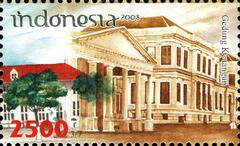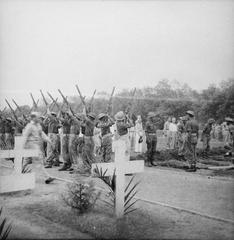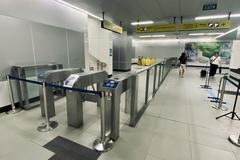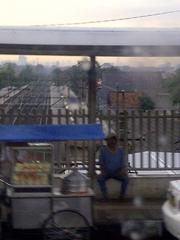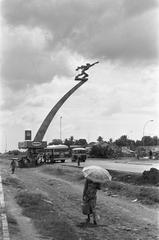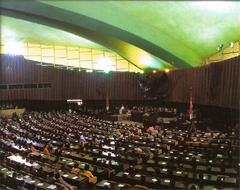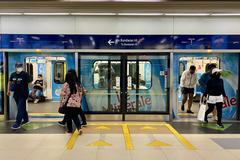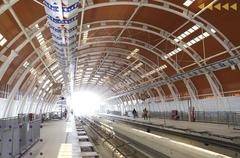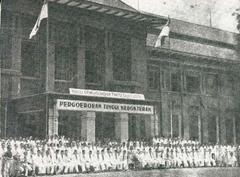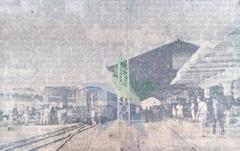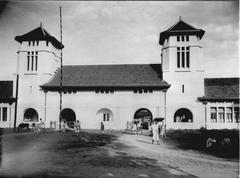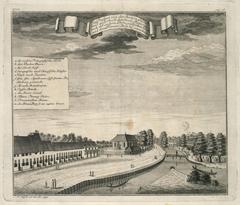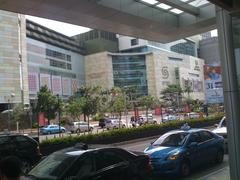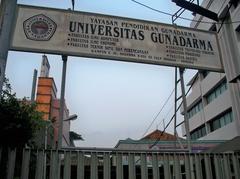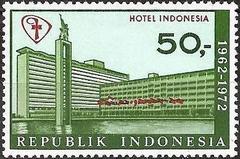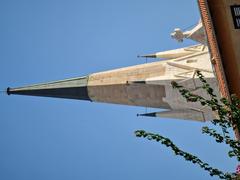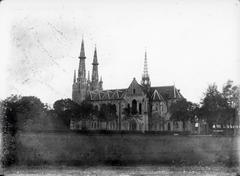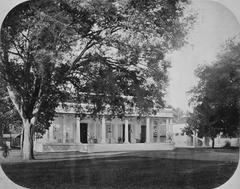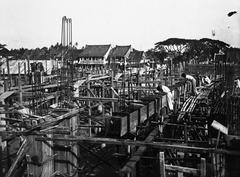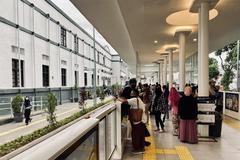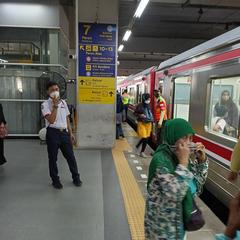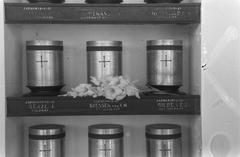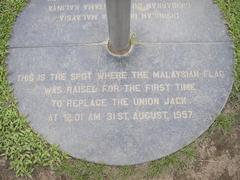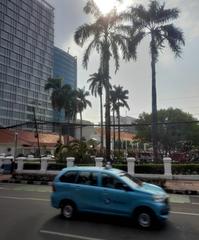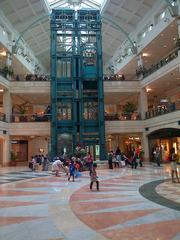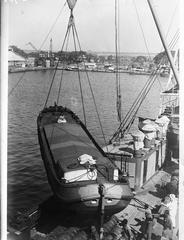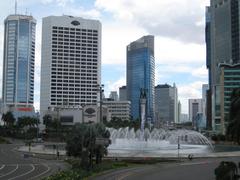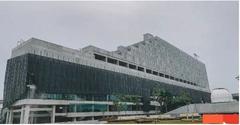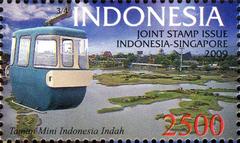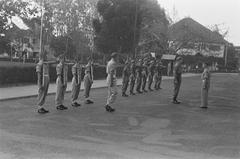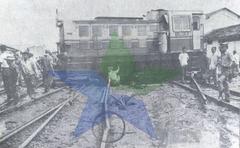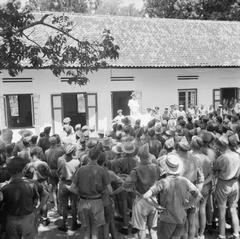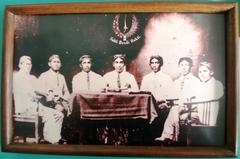Kebayoran Railway Station: Visiting Hours, Tickets, and Travel Guide to a Jakarta Historical Site
Date: 14/06/2025
Introduction
Kebayoran Railway Station (Stasiun Kebayoran) stands as a living testament to Jakarta’s transformation from a colonial-era outpost to a modern metropolis. Established in the late 19th century during Dutch colonial rule, the station catalyzed the urbanization of South Jakarta’s Kebayoran Baru district. Today, it masterfully blends preserved colonial architecture with contemporary facilities and serves as a vital node in the city’s commuter rail network. This guide presents an in-depth look at the station’s historical significance, architectural evolution, operational details, and practical visitor information, as well as highlights of nearby attractions and essential travel tips.
For up-to-date operational details and travel advisories, refer to official sources such as PT Kereta Api Indonesia and the Jakarta Tourism Official Page. (Kebayoran Railway Station: Visiting Hours, Tickets, and Historical Insights in Jakarta; Kebayoran Station Visiting Hours, Tickets, and Historical Significance in Jakarta)
Table of Contents
- Introduction
- Historical Overview
- Architectural Significance
- Urban and Economic Impact
- Visiting Kebayoran Station: Practical Information
- Modernization and Notable Events
- Frequently Asked Questions (FAQ)
- Visual Resources
- Conclusion
- Sources
Historical Overview
Kebayoran Railway Station was inaugurated in the late 19th century as part of the Westerlijnen (Western Lines), connecting Batavia (now Jakarta) with western Java, including Banten and Anyer Kidul. Originally constructed by the Batavia Oosterspoorweg Maatschappij (BOS) and later integrated into the Staatsspoorwegen (SS) network, the station was pivotal in shifting Kebayoran from an agricultural hinterland into an accessible urban area.
The station’s establishment provided a critical link for transporting local produce—rambutan, duku, mango, and durian—to Batavia, while supplanting laborious horse-drawn carriage travel. As the city expanded, Kebayoran Station became a cornerstone of South Jakarta’s development, especially following Indonesia’s independence and the planned satellite city project of Kebayoran Baru.
Architectural Significance
Kebayoran Station’s original design exemplified Dutch colonial railway architecture, featuring high ceilings, wide eaves, and sturdy masonry—elements suited to the tropical climate. The resemblance to other contemporaneous stations like Serpong and Sudimara highlights its architectural lineage (99.co).
In 2016, a major renovation elevated the station to a two-level structure with modern amenities—escalators, elevators, accessible toilets, prayer rooms, and retail outlets—while retaining subtle colonial elements (Wikipedia). The addition of the Kebayoran Lama Skywalk in 2023 further enhanced connectivity, offering sheltered access to TransJakarta Busway corridors 8 and 13 (Traveloka).
Urban and Economic Impact
Strategically located in South Jakarta, about 7 km from Tanah Abang, Kebayoran Station has long served as the western gateway for commuters and travelers. During the post-independence era, the station underpinned the rapid growth of Kebayoran Baru as a planned urban district, supporting residential, commercial, and administrative development. Its proximity to Blok M, Gandaria City Mall, and surrounding business hubs has cemented its role in facilitating both daily commuting and leisure travel.
Visiting Kebayoran Station: Practical Information
Visiting Hours
The station operates daily from 04:00 to 23:00 WIB, accommodating early morning and late evening passengers (99.co). Train departures start at 04:30 WIB, with the last service to Cisauk at 23:30 WIB.
Ticketing
Tickets for KRL Commuter Line services (Green Line: Tanah Abang–Rangkasbitung) are available at station counters, vending machines, and via the KAI Access mobile app. Payment options include cash, electronic money cards, QRIS, and multi-trip cards (KMT), with fares typically between IDR 3,000–15,000 (99.co).
Accessibility
Kebayoran Station is equipped for barrier-free access, with elevators, escalators, and ramps. Facilities include nursing rooms, health rooms, and assistance services for travelers with special needs. The skywalk ensures easy transfer to TransJakarta Busway corridors (Traveloka).
Travel Tips
- Arrive early, especially during peak hours (7–9 AM, 4–6 PM).
- Opt for contactless payment and digital ticketing for convenience.
- Use the Kebayoran Lama Skywalk for seamless transit to the busway.
- Monitor real-time schedules through official apps and station displays.
Nearby Attractions
- Pasar Kebayoran Lama: Traditional market with local cuisine and goods.
- Blok M: Shopping, dining, and nightlife hub.
- Gandaria City Mall: Modern shopping and entertainment.
- Senopati & SCBD: Upscale dining and lifestyle destinations.
- Ruci’s Artspace: Contemporary art exhibitions.
- Taman Barito & Taman Ayodya: Green spaces ideal for relaxation.
Modernization and Notable Events
Renovation and Expansion
Between 2014–2016, the Indonesian Ministry of Transportation led a major overhaul, elevating the station and expanding its facilities to accommodate growing commuter traffic. The skywalk, completed in 2023, exemplifies Jakarta’s shift towards integrated, sustainable mobility (Wikipedia).
Safety and Operations
Kebayoran Station employs advanced safety protocols, regular maintenance, and crowd management strategies. Wide platforms, clear signage, and emergency exits enhance passenger security. Lessons from historical incidents, such as the 1987 train crash, have informed ongoing improvements (Wikipedia).
Frequently Asked Questions (FAQ)
Q: What are Kebayoran Railway Station’s operating hours?
A: Daily, 04:00–23:00 WIB.
Q: How can I purchase tickets?
A: At counters, vending machines, or via the KAI Access app. Multiple payment methods accepted.
Q: Is the station accessible for people with disabilities?
A: Yes. Elevators, ramps, and assistance services are available.
Q: Are there guided tours?
A: No official tours, but special events and local group tours are occasionally organized.
Q: What are the main nearby attractions?
A: Pasar Kebayoran Lama, Blok M, Gandaria City Mall, Senopati, Ruci’s Artspace, and local parks.
Visual Resources
Explore interactive Jakarta Urban Railway Map (2024) and high-quality station images on Jakarta’s tourism and transportation websites.
Conclusion
Kebayoran Railway Station exemplifies the harmonious coexistence of Jakarta’s historical heritage and modern urban development. Its enduring colonial architecture, comprehensive modernization, and robust multimodal connectivity make it both a vital commuter gateway and a destination for cultural exploration. Visitors can enjoy convenient operations, accessible facilities, and proximity to South Jakarta’s most dynamic neighborhoods and attractions.
Plan your journey by consulting official schedules, securing tickets in advance, and using the latest mobility apps for a seamless experience. For more travel inspiration and real-time updates, connect with PT Kereta Api Indonesia, Jakarta Tourism Official Page, and download the Audiala app.
Sources
- Kebayoran Railway Station: Visiting Hours, Tickets, and Historical Insights in Jakarta
- Kebayoran Station Visiting Hours, Tickets, and Historical Significance in Jakarta
- Visiting Kebayoran Railway Station Monument: History, Visitor Info, and Travel Tips
- Kebayoran Railway Station and Surrounding Attractions: Visiting Hours, Tickets, and Things to Do in South Jakarta
- Review Stasiun Kebayoran
- Jakarta Travel Guide: Things to Do in Jakarta
- Traveloka: Kebayoran Station
- Flokq: Things to Do in Kebayoran Baru
